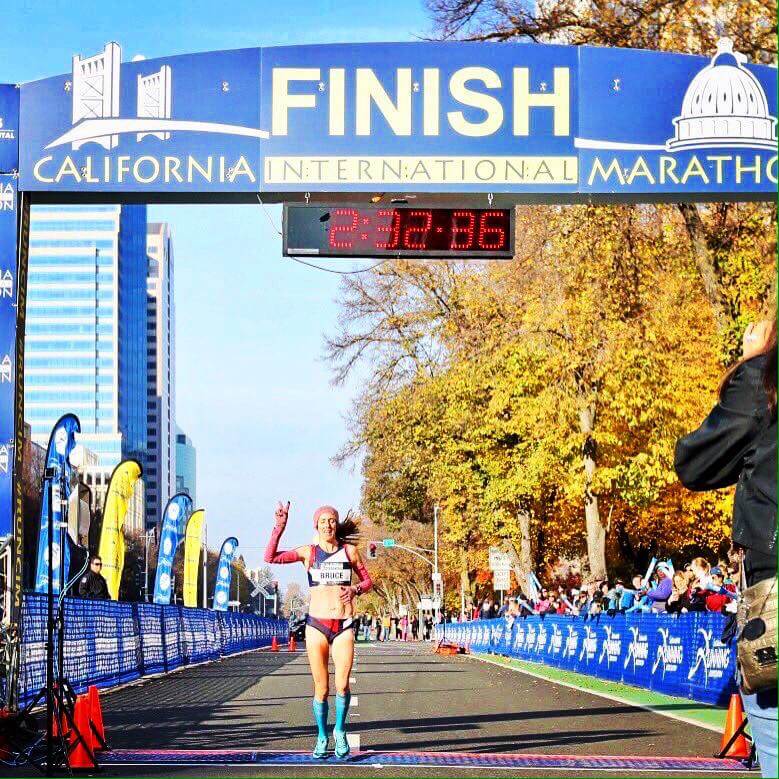Here’s How to Jump from Half Marathoner to Marathoner

Completing a half marathon for the first time is a feeling runners never forget. It’s a contagious feeling that hits harder than the running bug, leaving the runner signing up for their next race. After having a few half races under the belt, the runner might contemplate if it’s time to make that leap and jump up to the marathon. But how does one go from half to full marathoner successfully?
Know When You’re Ready
You might feel like they are never fully ready to attempt that 26.2 miles. But signs that you are ready includes running a few half marathons. When you start to notice an increase in speed during this distance or that it is becoming less difficult, it may be time to tackle the new goal.
Consistency is key here, making sure that before signing up for a marathon you generally run about 20 miles a week. There are exceptions to these rules, such as those who start training without any serious running experience. However, to prevent injury and to get the body properly prepared, it’s best to be familiar with running.
When you are comfortable running 10 miles, this is a good sign you are ready for a marathon. That’s because 10 milers are the foundation to marathon training runs. 10 miles will become the recovery “short” run as the week’s progress in training.

Make The Time
While many half marathoners follow a 12-week training program, marathon training takes a bit longer to prepare for. Marathon training programs are generally 16 to 20 weeks long. This is so that the mileage increase is done gradually. This means the runner must be sure they have the time to commit to this goal. It means making sacrifices like skipping a night out when an 18-mile run is planned for the next morning—especially when it has to get done that morning because family commitments tie up the rest of the day.
Also, make sure to take into the account recovery time needed during marathon training. This might include sitting in an ice bath after a really long run—something most half marathoners don’t do.
Increase The Mileage
But even though you know you can run 13.1 miles, doubling that distance can still feel scary. The good news is that just like half marathon training, mileage slowly increases during full marathon training.
“Obviously, you’re going to want to increase your training a bit,” Hoka One One NAZ Elite runner Stephanie Rothstein Bruce told RunnerClick. “The cool thing about running is you don’t have to run 26 miles in practice to know you can run 26 miles in the race.”
Bruce, the recent female winner of the USATF 10km Championship AJC Peachtree Road Race said its a “beautiful puzzle” of how training comes together.

“If you run long runs and your running that in the middle of a high mileage week, that’s going to prepare you for what 26 miles will feel like because your training on tired legs,” Bruce said.
Join A Group
Running those long miles can start feeling very lonely. That’s why it’s a great idea to join forces with a local running group or other marathoners in the area. This way they can help hold you accountable and be someone to run with to help make longer runs fly by.
It might also be worth considering hiring a running coach to help keep you on the right track. They can provide insight, and better prepare you for race day. Plus it is always a bonus to have someone cheering for you, and the level of support given is priceless.
Anyone Can Do It (And Do It Again and Again)
If you can run 13.1 miles, you can run 26.2. It’s not really a leap of faith to run a marathon. A marathoner needs to trust in their abilities and in their training. That means training is key.
“I think anyone is capable of running a marathon,” the two-time All-American and Olympic trials qualifier said.
With a 2:29 PR in the marathon, Bruce added, “It seems more daunting or scary when you look at it on paper. Slowly increase your training and then know that the good thing is you can slow your pace down because you’re going twice the distance.”
With hard work and the proper training, crossing that finish line is possible. And while it’s a major accomplishment to complete a half marathon, finishing a marathon is even greater. “How many people in this world can say they ran a marathon,” Bruce said. “So you can put yourself in that conversation. I think it’s a huge accomplishment.”

After talking with Bruce, a major takeaway is that believing in yourself is major when it comes to training and showing up ready to crush the goal on race day.
Bruce, who finished in 10th place in the 2017 NYC Marathon as well as in the 2018 London Marathon, revealed that it does get easier the more marathons the runner does.
“There’s is a lot to learn after your first one,” she said. “Don’t let your first be your last.”
Sources
- , When Do I Know I’m Ready to Run a Marathon?, Running Website
- , The Magic Of Ice Baths For Speedy Marathon Recovery, Running Website
Latest Articles
 Is Running on a Treadmill Easier Than Running Outside?Runners have their own preferences, whether it is treadmill running, running outside on the road, or exploring trails. So...
Is Running on a Treadmill Easier Than Running Outside?Runners have their own preferences, whether it is treadmill running, running outside on the road, or exploring trails. So... Is It OK to Use Trail Running Shoes on the Road?While trail running shoes can be used on roads, especially in situations where a runner encounters mixed terrains or pref...
Is It OK to Use Trail Running Shoes on the Road?While trail running shoes can be used on roads, especially in situations where a runner encounters mixed terrains or pref... How to Fix Sore Quads After Running?Rest, ice, gentle stretching, and over-the-counter pain relievers can help soothe sore quads after running. Also, ensure ...
How to Fix Sore Quads After Running?Rest, ice, gentle stretching, and over-the-counter pain relievers can help soothe sore quads after running. Also, ensure ... 10 Fruits With The Most Electrolytes to Replace Sports DrinksThese fruits are high in electrolytes such as potassium, magnesium, and calcium, essential for hydration, muscle function...
10 Fruits With The Most Electrolytes to Replace Sports DrinksThese fruits are high in electrolytes such as potassium, magnesium, and calcium, essential for hydration, muscle function...

